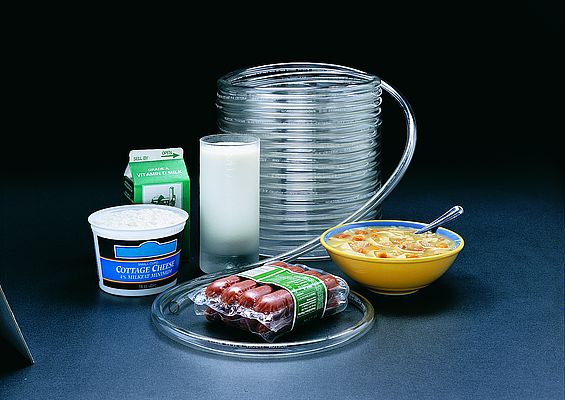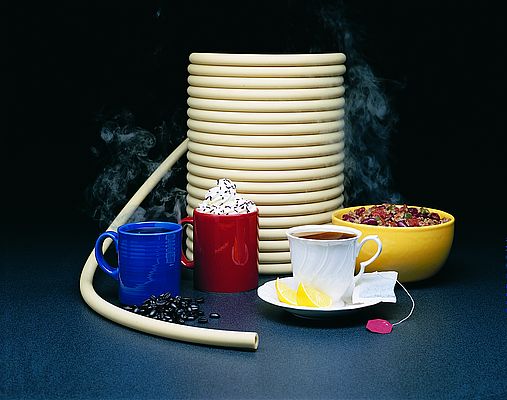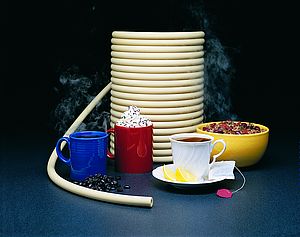Recent global economic challenges have caused most manufacturing sectors to focus heavily on maximizing cost-efficiency; however, food and beverage processors have more pressing concerns. What could be more important than the bottom line? In a word: safety.
According to a 2012 industry manufacturing trends survey, food safety topped the list of processor concerns in the coming year – ahead of cost controls. While always a priority, recent publicized food contamination incidents have caused a marked decrease in consumer confidence regarding safety precautions taken by food and beverage processors. Consumers have developed a powerful voice and are asserting more influence over how their food is handled and processed, driving increased oversight and regulations, worldwide.
A significant link in the farm-to-fork supply chain, food and beverage processing involves the use of complex equipment to process, transfer and dispense food, to the packaged brands in the store. As part of this manufacturing process, food-grade tubing is often used in food contact applications from milk transfer to flavorant and syrup dispensing. Typically made using various polymers, including silicone and plastic, these tubing solutions often come into direct contact with the food we will eat. When specifying a food contact tubing solution, processors need to look for benefits that include food safety, as well as optimal performance and sustainability.
Global Melting Pot of Regulations
Because of the potential for bacteria and other pathogens to enter the food supply chain at the manufacturing stage, food safety in the processing facility is a primary concern. Driven by consumer perception, states and countries are taking greater measures with new, more stringent regulations.
In North America preventative controls and regulations set by the Food Safety Modernization Act (FSMA), put into effect by July 2012, granting the Food and Drug Administration (FDA) the power to take preventative rather than reactive measures against food contamination, including training, oversight and inspection of both foreign and domestically processed food.
In Europe, the European Food Safety Authority (EFSA) has adopted the General Food Law Regulation, created to protect all EU member nations. A European regulation for plastics in contact with food, the Plastics Implementing Measure (PIM), is also in place. Meanwhile, the Chinese Ministry of Health is overhauling the country’s food safety standards and regulations in order to more closely align with international standards, and restore a tarnished public image and consumer confidence. As a major international manufacturing power, this will likely have a strong impact on food and beverage processing, worldwide.
With several different regulatory bodies enacting different sets of standards, global manufacturers must invest significant resources to ensure that their products meet the criteria set in each market where their products are sold. And it gets more complicated for manufacturers that may source ingredients from China, purchase their production equipment in Germany and manufacture in the U.S. Now more than ever, ensuring global compliance is a complex process that takes a great deal of time, expertise and an inventory of many different materials and machines.
High-Performance as the New Standard
While meeting food safety regulation is a key concern, food and beverage processors need to specify tubing material that will not only ensure product safety, but also perform a specific function effectively and efficiently within a processing facility. Advances in materials science have yielded innovative materials with various performance properties, resulting in tubing solutions that provide dependable food safety and effective performance.
In an environment that features extreme temperatures, corrosion, abrasion, and varying pressures, durability, flexibility and chemical resistance are vitally important in food and beverage processing. Chemical resistance is also important in ensuring that tubing solutions stand up to aggressive cleaners.
Peace-of-Mind
When choosing an advanced material for their tubing solutions, food and beverage processors need to be part fortune teller – identifying any potential issues on the horizon, in order to mitigate any risks and potential damage to their reputations and that of their customers’ brands. Largely, this can be handled by focusing on existing concerns, such as food safety. However, this can also include unforeseen concerns driven by consumer speculation. Getting ahead of potential consumer concerns can help proactively deal with any future safety issues– real or imagined. One less headache for brand owners and processors, choosing the right tubing material now will help ensure brand protection and risk management for the future.
Sustainable Solutions
The sustainability of a brand can be measured in many ways, including the reduction of greenhouse gases, minimizing material waste or harmful by-products, or higher efficiency equipment and operations. When looking at tubing solutions, at the end of its useful lifecycle, tubing must be disposed of. Typical disposal can require incineration, which has far-reaching negative effects on the environment, releasing hazardous and corrosive hydrochloride gas which can produce acid rain. Tubing made from environmentally sound materials can be safely disposed of without releasing unsafe by-products. It is important that tubing solutions for food processing operations help brands reach their sustainability goals to minimize carbon footprint and inspire confidence from consumers, partners and investors.
In an increasingly difficult-to-navigate environment, food and beverage processors need to focus on many moving parts. With more and more regulatory watchdog attention paid to the issue of food safety, processors must be equipped to keep up with the many different regulatory requirements throughout the world. Quick and cost-effective globally compliant solutions for food processing tubing applications are needed to ensure product safety and protect brand equity. In addition, these same tubing solutions must maintain high levels of performance and sustainability. Believe it or not, advanced material solutions exist that can meet this extensive list of performance criteria, supporting the continued success of food processors and increasing their ability to compete in a complex global marketplace.
By Damien Canac, Global Marketing Manager, Food & Beverages, Saint-Gobain Performance Plastics
Product transfer and dispensing
under the regulatory microscope
- by Saint Gobain Performance Plastics
- August 29, 2012
- 349 views



















